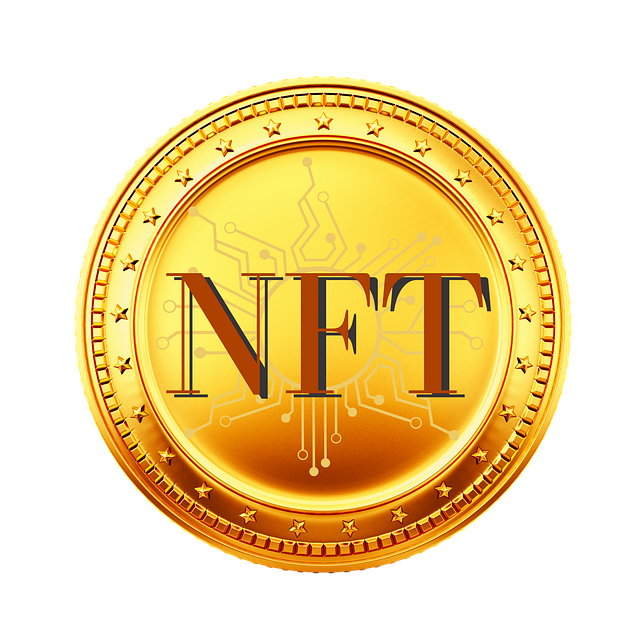Crypto Futures vs Spot in 2025: An In-Depth Comparison for Traders
Author: Jameson Richman Expert
Published On: 2025-09-06
Prepared by Jameson Richman and our team of experts with over a decade of experience in cryptocurrency and digital asset analysis. Learn more about us.
Navigating the rapidly evolving landscape of cryptocurrencies requires a nuanced understanding of various trading mechanisms, particularly the fundamental differences between crypto futures and spot trading. As an experienced trader with years of hands-on experimentation, I recognize that mastering these concepts is crucial for maximizing profit potential, managing risks, and adapting to market shifts in 2025. This comprehensive guide aims to provide an in-depth analysis, exploring not only the basics but also advanced strategic considerations, risk management techniques, and future trends shaping crypto trading. By understanding these nuances, traders can optimize their strategies in a competitive environment marked by technological innovation, regulatory developments, and increasing institutional participation.

Understanding Crypto Spot Trading: The Basics and Beyond
Spot trading remains the foundational pillar of cryptocurrency investing, characterized by the immediate exchange of digital assets at prevailing market prices. When you buy Bitcoin, Ethereum, or other cryptocurrencies on platforms like Coinbase, Binance, or Kraken, you gain direct ownership of the assets, which are stored securely in your digital wallet. The transaction is settled instantly, allowing for real-time portfolio management and liquidity adjustments. This immediacy fosters a transparent pricing mechanism driven by actual supply-demand interactions, with prices updated continuously across exchanges via an efficient global price discovery process.
Beyond its simplicity, spot trading serves as the backbone for more complex derivative strategies, acting as the underlying asset base. It appeals to long-term investors, institutional entities, and risk-averse traders seeking tangible exposure without contractual obligations. Ownership confers benefits such as staking (for proof-of-stake tokens), transferability, participation in network governance (for select tokens), and the ability to utilize assets within DeFi protocols. However, significant capital is often required to realize substantial gains, since profits are directly tied to market movements. Leveraging holdings via margin trading or diversifying across assets can amplify returns but also introduces additional layers of risk, including liquidation and systemic market shocks.
Furthermore, spot trading exposes traders to full market volatility—sudden price swings driven by macroeconomic events, regulatory announcements, technological upgrades, or market sentiment shifts. Effective risk management practices—such as setting stop-loss orders, maintaining diversified portfolios, and employing proper position sizing—are critical to safeguarding capital in such unpredictable environments. Additionally, understanding arbitrage opportunities across multiple exchanges helps traders exploit price discrepancies, which often exist due to fragmented liquidity or regional regulations.
The ongoing maturation of the spot market in 2025 incorporates increased institutional participation, more robust custody solutions, and integration with traditional financial infrastructure, making it a more secure and efficient foundation for crypto investment. Additionally, advanced order types—like iceberg, fill-or-kill, and hidden orders—offer traders more control over execution and strategic positioning, especially during periods of heightened volatility or low liquidity.
Deep Dive into Crypto Futures Trading: Mechanics and Strategic Use
Crypto futures are sophisticated financial derivatives that derive their value from underlying cryptocurrencies like Bitcoin, Ethereum, Solana, and others. Unlike spot trading, futures involve entering into contractual agreements that specify the purchase or sale of an asset at a predetermined price on a future date, with some contracts settling in cash and others through physical delivery. They enable traders to speculate on the price direction of cryptocurrencies without owning the underlying assets, offering unique strategic advantages such as hedging, leverage, and diversification of trading tactics.
In 2025, futures trading platforms such as Binance Futures, Bybit, Bitget, and Deribit have evolved to incorporate advanced features—high leverage options (up to 100x), complex order types (conditional orders, trailing stops, One-Cancels-the-Other, etc.), and integrated analytics tools. These features empower traders to implement nuanced strategies, including short selling, arbitrage, and market making, whether for short-term speculation or longer-term hedging. The increased sophistication of these platforms reflects a broader trend toward democratizing access to advanced derivatives, previously limited to institutional traders.
Leverage is a double-edged sword—while it magnifies potential gains, it also amplifies losses, risking rapid liquidation if the market moves against a position. For example, a 10x leveraged long position can yield tenfold profits if the market rises favorably but can be liquidated swiftly if prices decline sharply, especially during high volatility periods. Consequently, effective risk mitigation strategies—such as employing stop-loss orders, setting realistic take-profit points, and maintaining adequate margin levels—are essential. Additionally, traders should be aware of funding rates and their impact on perpetual swaps, which can either cost or reward traders based on market sentiment and the futures curve structure.
Understanding the mechanics of margin and collateral management is critical—especially during volatile periods—since fluctuations in crypto prices can quickly erode margins, leading to forced liquidations. The futures market also introduces concepts like contango and backwardation, which influence futures premiums and trading costs, particularly in perpetual contracts where funding rates play a pivotal role in aligning futures prices with spot prices over time. Sophisticated traders often utilize these dynamics to craft arbitrage strategies or hedge existing holdings efficiently.
Key Differentiators: Crypto Futures vs Spot Trading
- Ownership and Asset Delivery: Spot trading grants immediate ownership of actual cryptocurrencies, enabling transfer, staking, participation in DeFi projects, and use within blockchain ecosystems. Futures, however, are contractual agreements without ownership until settlement, which often occurs via cash settlement or, in some cases, physical delivery (rare in crypto markets). This fundamental difference impacts how traders manage assets and risk.
- Leverage and Capital Efficiency: Futures allow traders to control larger positions with less capital through leverage, potentially multiplying returns but also increasing risk of margin calls or liquidation. Spot trading generally involves using available cash, limiting exposure but also capping potential gains unless combined with leverage via margin accounts. The capital efficiency of futures makes them attractive for active traders seeking increased market exposure without significant capital outlay.
- Expiration and Contract Terms: Futures contracts have predefined expiration dates, necessitating strategic rollover or closing of positions to avoid unfavorable rollovers or liquidation. Spot trades are indefinite until actively closed by the trader, offering more flexibility but requiring ongoing management to adjust for market conditions. The choice of contract duration (e.g., perpetual vs quarterly futures) significantly influences trading strategies, especially in trending or sideways markets.
- Risk-Reward Profile: Futures can generate substantial profits due to leverage, but they entail higher risks, including liquidation risks and amplified losses. Spot trading is considered less risky, with profit potential directly tied to market appreciation, though without leverage, gains tend to be steadier and more predictable. Combining both can provide a balanced approach suited for various market scenarios.
- Market Dynamics and Price Influences: Futures prices are affected by factors such as contango (futures prices exceeding spot prices), backwardation (futures below spot), and funding rates—oscillating based on market sentiment, liquidity, and arbitrage activity. These dynamics influence trading strategies and market liquidity, whereas spot prices are primarily driven by supply-demand fundamentals and macroeconomic factors. Traders often analyze these curves to identify opportunities or manage costs effectively.

Strategic Considerations for 2025: Which Path to Choose?
The decision between spot and futures trading in 2025 depends heavily on individual risk appetite, investment goals, and technical proficiency. Modern platforms like Binance, MEXC, Bitget, and Bybit offer a broad suite of advanced tools—real-time analytics, algorithmic trading bots, backtesting capabilities—that enhance strategic decision-making across both markets. For conservative investors focused on long-term value accumulation, spot trading offers ownership benefits, lower risk exposure, and gradual wealth growth aligned with fundamental developments in blockchain technology and adoption. As blockchain sectors mature and institutional participation increases, spot trading can serve as a stable core component in diversified portfolios.
Conversely, aggressive traders seeking rapid gains through tactical speculation and leverage may prefer futures trading. The ability to hedge existing holdings, capitalize on short-term volatility, and control large market positions with minimal capital outlay can be highly lucrative. However, these strategies demand disciplined risk management, continual market monitoring, and a thorough understanding of leverage mechanics, funding rates, and expiration risks. Successful futures trading in 2025 will also depend on leveraging automation, AI-driven analytics, and cross-platform integrations to optimize execution and reduce human error.
Risks and Mitigation Strategies in 2025
Market volatility remains a significant concern in 2025, exacerbated by high leverage, geopolitical tensions, macroeconomic uncertainties, and evolving regulatory frameworks. Elevated leverage levels in futures markets can lead rapidly to liquidation during sudden price swings, often within seconds. To mitigate these risks, traders should employ robust risk management tools: setting tight stop-loss orders, defining clear take-profit levels, and maintaining diversified portfolios to avoid overexposure. Additionally, employing position sizing techniques—such as the Kelly Criterion or fixed fractional methods—can help optimize risk-reward ratios.
Regulatory uncertainty is another critical factor—different jurisdictions are considering or implementing restrictions on derivatives trading, which could impact platform operations, leverage caps, and order execution. Staying informed through reputable sources such as CoinDesk, CryptoSlate, and official regulatory agencies is essential. Choosing compliant exchanges that adhere to regional regulations (e.g., Binance, Bitget, Bybit) helps reduce counterparty risk and ensures access to reliable trading infrastructure. Diversifying across multiple regulated platforms can also mitigate systemic regulatory risks.
Furthermore, ongoing education, simulated trading via demo accounts, and gradual exposure increase are vital for building resilience. Avoiding excessive leverage, especially during highly volatile periods, is crucial to prevent catastrophic losses. Employing advanced risk metrics like Value at Risk (VaR) analysis and stress testing trading strategies against historical market shocks can provide additional safeguards in turbulent environments. Staying vigilant about liquidity conditions and order book depth enhances execution quality and reduces slippage during rapid price movements.
The Future of Crypto Trading in 2025 and Beyond
The landscape of crypto trading in 2025 is poised for transformative growth driven by technological innovation, regulatory maturation, and institutional integration. Blockchain scalability improvements—such as layer-2 solutions like rollups, state channels, and sidechains—will enable faster, cheaper transactions, enhancing platform reliability and user experience. Increased institutional participation will lead to greater liquidity, tighter bid-ask spreads, and transparent markets for derivatives like options, perpetual swaps, and structured products.
Regulatory clarity is anticipated to foster legitimacy and mainstream acceptance, paving the way for more sophisticated financial instruments, including tokenized assets, compliance-based derivatives, and cross-chain interoperability. Platforms like Mexc, Bitget, and others are expanding their ecosystems by integrating decentralized finance (DeFi) protocols, enabling features like liquidity pooling, yield farming, and automated market making, which diversify trading strategies and risk management approaches.
Artificial intelligence and machine learning are expected to revolutionize trading by providing real-time sentiment analysis, predictive analytics, and algorithmic execution. These tools aim to minimize emotional biases, optimize trade entry and exit points, and enhance risk-reward ratios in an increasingly complex and fast-paced environment. Additionally, decentralized exchanges (DEXs) and cross-chain bridges will facilitate seamless asset transfers and trading across multiple blockchain networks, further expanding opportunities and accessibility.
Moreover, the rise of decentralized finance and compliant tokenized assets will blur the lines between traditional and crypto markets. Automated trading systems, powered by AI, will adapt dynamically to market conditions, reducing reliance on human intervention and increasing efficiency. As privacy-preserving technologies mature, traders will benefit from enhanced security and anonymity, encouraging broader adoption among retail and institutional participants alike.

Conclusion: Crafting Your Crypto Trading Strategy for 2025
Understanding the nuanced differences between crypto futures and spot trading is essential for developing a resilient, adaptable strategy in 2025. Both methods offer unique advantages—futures provide leverage, hedging, and tactical flexibility, while spot trading offers ownership, stability, and lower risk exposure. An optimal approach often involves a strategic blend tailored to your risk profile, market outlook, and technological proficiency.
Success in this dynamic space demands continuous education, disciplined risk management, and leveraging cutting-edge platform features—such as automated trading, AI-driven insights, and cross-platform integrations. Staying abreast of regulatory developments, technological advances, and market sentiment—via reputable sources such as Binance, MEXC, Bitget, and Bybit—is crucial. Embracing diversification, refining your strategies proactively, and maintaining a resilient mindset will position you to thrive in the competitive, ever-innovating world of crypto trading in 2025 and beyond. Adaptability, knowledge, and disciplined execution remain the cornerstones of sustained success in this high-stakes, rapidly-changing market environment.